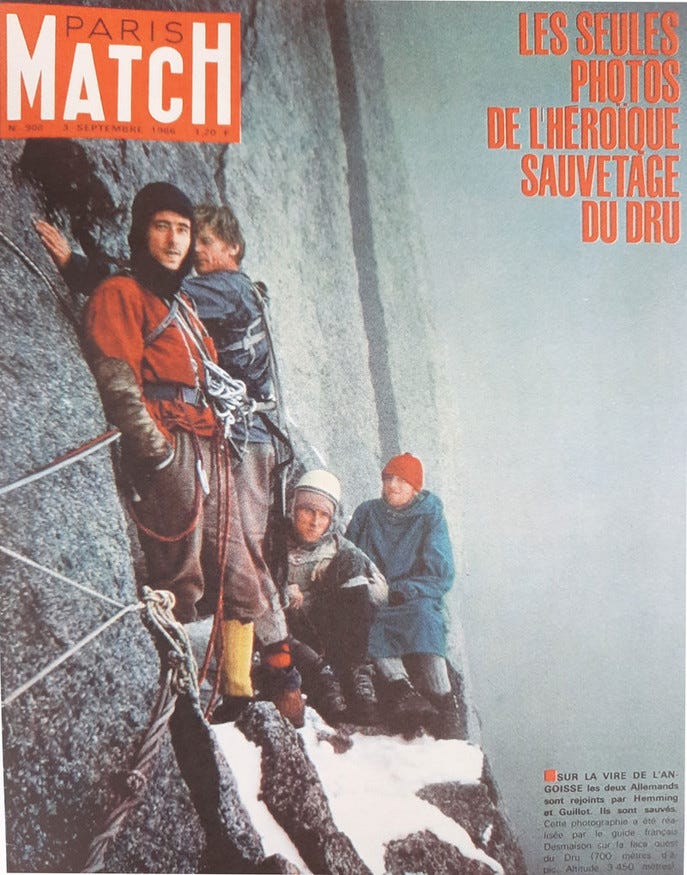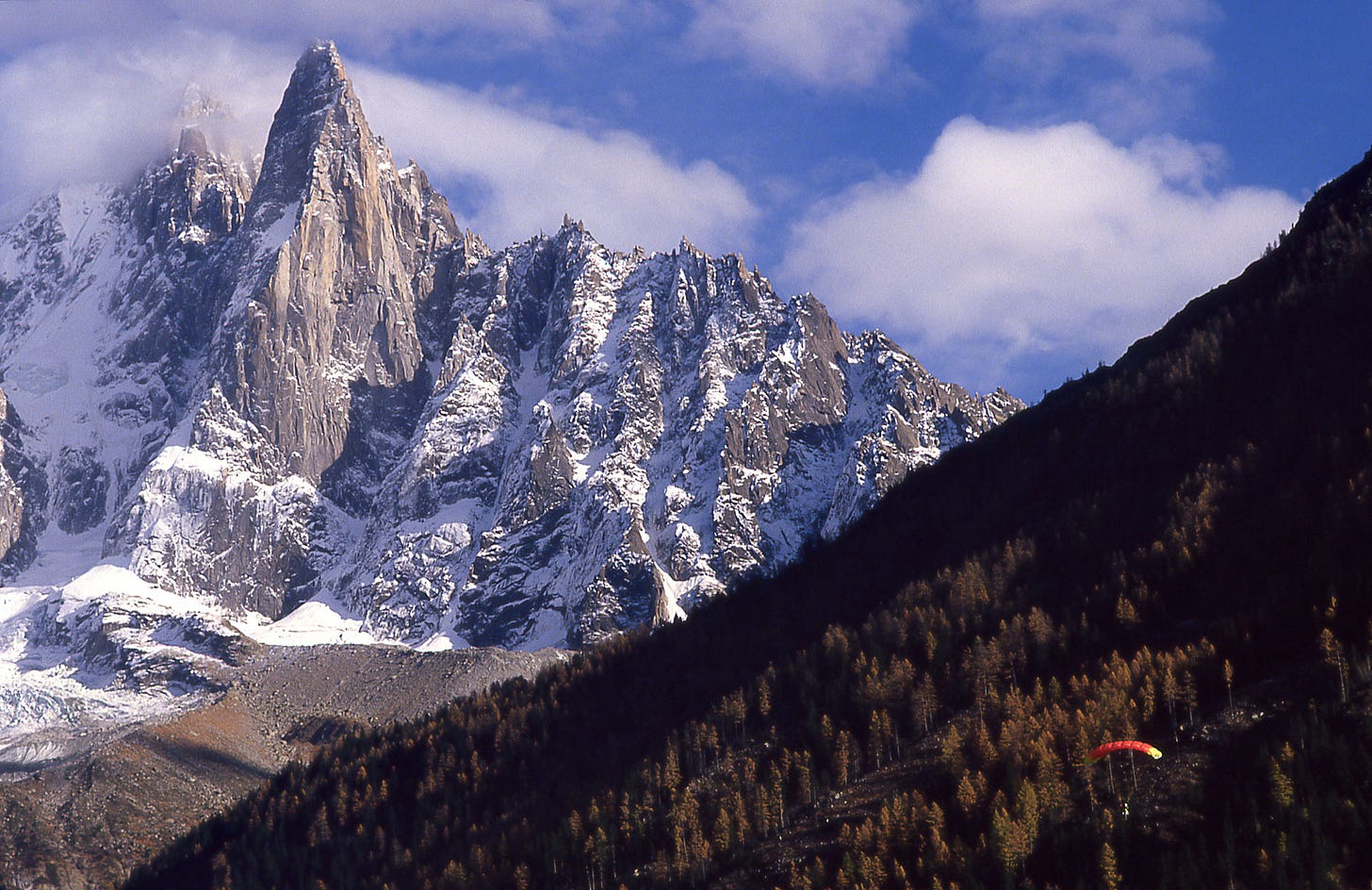Thus proclaimed the September 1966 edition of Paris Match. Followed by up to 10 million Europeans, the unfolding rescue made American Gary Hemming (second from left) one of the most famous people on the Continent. In a secret deal set up in advance, French guide René Desmaison (not shown), who headed up an unofficial rescue, covered the epic for Paris Match. On the cover, rescued German climbers Hermann Schriddel and Heinz Ramish are seated in the background, with French climber and rescuer François Guillot in the foreground. Photo: Gerard Gery/Paris Match.
/
During the years I lived in the Chamonix I read Desmaison's books in both French and English. I had James Salter's book, "Solo Faces", which is loosely based on Gary Hemming's life and his experiences in the Alps, more or less memorized. His legacy remained in the French alpine consciousness two decades later when I arrived, and certainly informed my time there, and the expectations I had of the place and myself. After a couple of years there I felt like I understood the fickle nature of the land and its people: that Hemming could be cast as a hero while Desmaison became the "nigger on the woodpile" (his words) and kicked out of the Compagnie de Guides de Chamonix, following the same incident demonstrates this national character perfectly. My climbing and my mouth drove an arc-of-the-pendulum relationship with the French, from little darling to arrogant prick, but I didn't have the philosophical dissonance that appears to have pushed Hemming toward a darker outcome.
Hemming was a mercurial personality. He climbed inconsistently—when the timing and mood struck him—and brilliantly when he did so. His rebellious nature was welcomed by the French but also put him in conflict with the so-called climbing establishment there. Lothar Mauch, who accompanied Hemming, Mick Burke, and François Guillot, among others, on the Dru rescue, said that Hemming's troubled relationship with the Chamonix guides began when they rejected his (and John Harlin's) offer to help rescue seven climbers stuck high on the Freney Pillar in 1961. Four of them perished. Later, he was ejected from an E.N.S.A. aspirant guide training course because he refused to shave, what Henry Kendall described as, his "magnificently unruly" beard. Mauch declared, “Gary never liked the Chamonix guides,” which put them in competition, if not confrontation, to rescue the German pair from the west face of the Dru. They had read about the stranded climbers in the Dauphiné Libéré newspaper while sitting out bad weather in Entreves on the Italian side of Mont Blanc and—believing the guides would fail in their rescue attempt—decided to go do it themselves.
Hemming's impact on Chamonix and French culture in general certainly made it easier for me to integrate there, especially after I gained fluency, which most Anglophones don't bother to do although he did. I was a punk to his hippy though and necessarily rejected ideas that he might have embraced. The beatnik is more attractive than the nihilist and I was more interested in dissension and burning shit down than in living and enjoying life so I put certain aspects of French and climbing culture out of reach. On the other hand I split time between Chamonix and Paris, worked in the (small) movie business there then, and more recently the big movie business there so I understand the dichotomy between the small mountain town and mountaineer and the temptation of big city, big culture and big, loud and powerful people. I was and am comfortable in both worlds while it is clear that-eventually-he was not.
I can't comment on the rescue itself other than to echo what others have already said: it's a thing that would never happen in this era, in that mountain range. Rescues have been mounted under similar circumstances in the greater ranges, of course, an example being the attempted rescue of Inaki Ochoa on Annapurna where Steck, Anthematten, and Urubko, among others climbed to his aid but were unable to save him. The modern situations are rarely subject to intense, contemporaneous media scrutiny in the same way the Dru rescue was; approximately ten million people listened to radio broadcasts or read newspapers of the drama as it unfolded over many days. I wonder whether modern man's attention span (and expectation of a quick, happy conclusion) would be long enough to allow such immersion in a similar saga should it happen today.
Jean Afanassieff's 1996 film, "Gary Hemming, le beatnik des cimes", is quite worth watching, only available in the original French.






Have you read Gary Hemming, Beatnik Of The Alps, by Mirella Tenderini? It's a good biography, well researched. I too, have read Solo Faces a few times. I heard that James Salter and Robert Redford were planning on collaborating and making it into a movie. It could have been a cult classic. It never happened.
Casually paragliding?